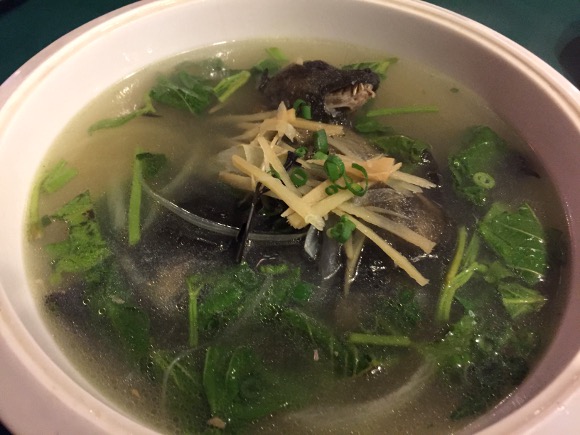
Beauty is in the eye of the beholder, and that goes for meals as well.
Palau is regarded as one of the most naturally beautiful countries in the world with its bounties of pristine oceans, gorgeous marine life and lush landscapes. Our writer PK Sanjun had become deeply enamored with it all during his brief visit.
His tour guide was also quite helpful, teaching PK all about life on the island. For example, not unlike Japan, Palau’s protein historically came almost exclusively from fish, hence it’s become a country with excellent seafood.
▼ Great sashimi isn’t hard to come by in Palau
That can be limiting, however, with not many other options for meat. This is why some in Micronesia had taken to eating bats as an alternate source of protein. Nowadays, Palau gets a lot of its meat imported from the US, so bat isn’t much in demand, but it still exists as a delicacy.
The guide said that fruit bats were eaten there because of their fruit-based diet which resulted in a sweet meat. That didn’t sound so bad, and not being one to pass up a chance at a unique eating experience, PK asked his guide to show him where bat can be eaten.
Our reporter ended up at a restaurant called Mog Mog on the central Island of Koror. It is a well known establishment partly due to its conspicuous sign featuring a huge crab with a pair of chopsticks and knocking back a cold one.
PK ordered a Bat Soup (with Ginger) for US$30 and waited nervously. As he waited, reassuring thoughts passed through his mind such as “How different can bat be from beef or chicken, anyway?” and “It’s probably just a part of the soup stock or minced into little meatballs or something.”
Boy, was he wrong.
PK stifled a scream, as through the murky broth the whole lifeless body of a bat could be seen soaking, with its face defiantly piercing the surface. He wasn’t really sure what to do with this, but luckily his server took the lead and began to remove the bat.
So as not to be rude, PK again had to internalize an instinctive “GYAHHHH!” thinking he saw the bat suddenly move while the server placed it on a separate dish. “Just drink the soup first,” she kindly instructed, and then took away the bat for further preparation.
Ten minutes later, PK’s trauma was beginning to subside when suddenly the second course of his bat soup appeared.
“GYAAHHHH!” thought PK again after seeing that the chef chose to dress the bat up like some kind of demon by sticking chili pepper’s in its eye sockets and and mouth like some devil horns and tongue.
He wondered if the chef actually did this on purpose and whether it was actually possible to decorate food in such a way as to make it less palatable. Still, he had come all this way. It would be foolish not to try it at this point, so PK grabbed a leg and took a bite.
PK described it as tasting like the chiai of a tuna. The term “chiai” refers to the dark red section of a fish that tends to have a bloody smell and texture more like red meat than fish. It is rarely used in sushi or sashimi and usually relegated to cat food, although it does have its fans.
In other words, it didn’t taste bad at all, but there wasn’t enough there to redeem it from the initial impact of its presentation. PK found himself unable to get past the first bite and just gave the rest away to another group of Japanese tourists at the next table.
Perhaps unsurprisingly, bat soup turned out not to be a hidden gourmet gem. But PK could relate to its existence, because even in the more inland areas of Japan some people have taken to some unconventional food sources like giant hornets. Likely in the same way, bat was just an acquired taste.
So, if you want a truly unique dining experience in Palau, you now know where to get it. Otherwise, you’d probably be better off sticking with the sushi.
Photos ©SoraNews24
[ Read in Japanese ]